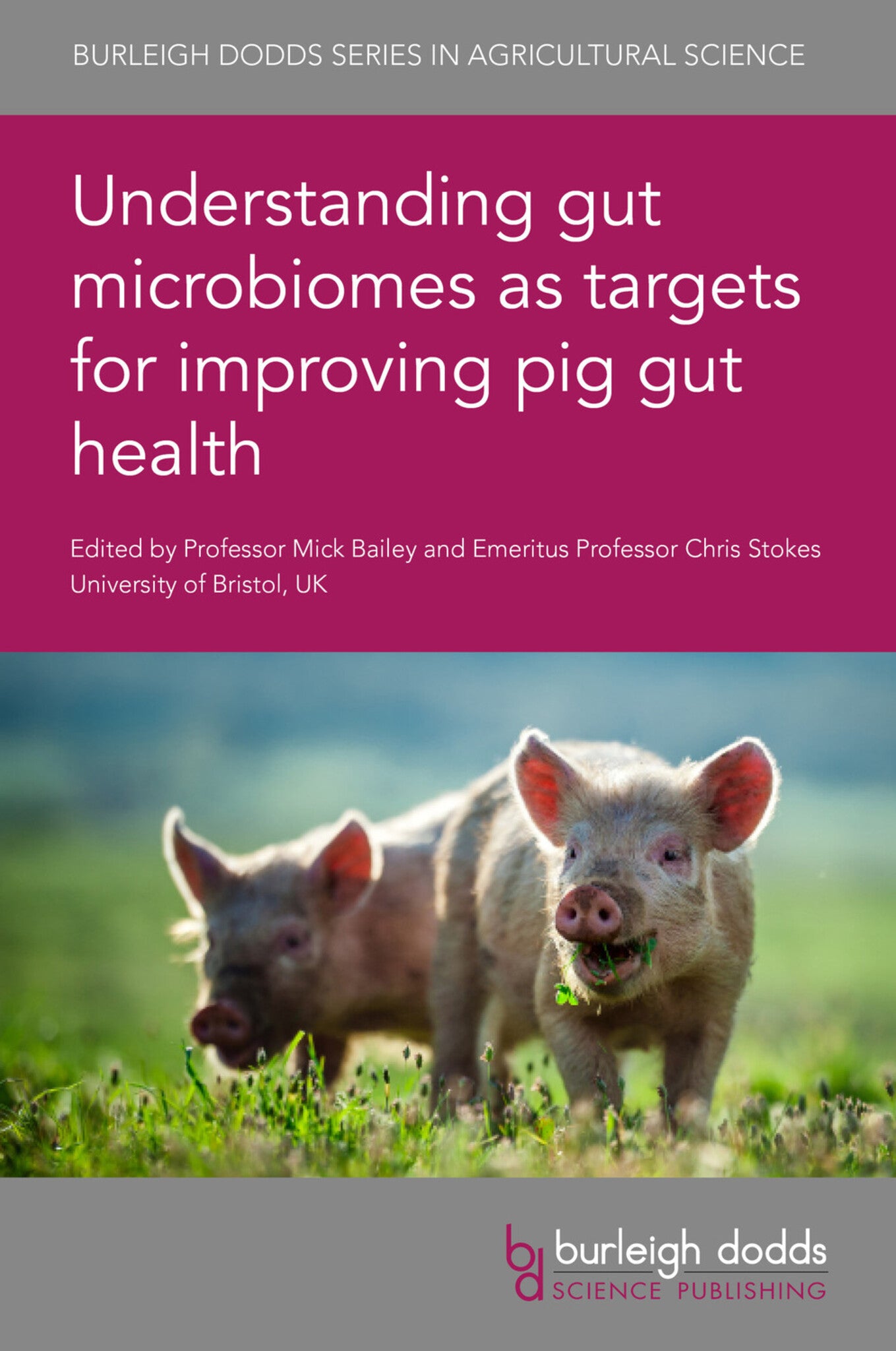We're sorry. An error has occurred
Please cancel or retry.
Understanding gut microbiomes as targets for improving pig gut health

Some error occured while loading the Quick View. Please close the Quick View and try reloading the page.
Couldn't load pickup availability
- Format:
-
11 January 2022

- Provides a comprehensive coverage of the key ecosystem services delivered by the gut microbiome
- Analysis of the pig gut microbiome and its relationship with the pig gastrointestinal tract
- In-depth focus on the techniques available to optimise gut function as a means for improving pig gut health

TECHNOLOGY & ENGINEERING / Agriculture / Animal Husbandry, Animal husbandry, TECHNOLOGY & ENGINEERING / Agriculture / Sustainable Agriculture, Sustainable agriculture

“The pig production sector faces many challenges, including the need to improve feed efficiency to reduce emissions from manure, finding alternative methods to prevent the onset of diseases affecting swine, as well as ensuring that the welfare of pigs is consistent with consumer and regulatory agencies’ expectations. Understanding gut microbiomes as targets for improving pig gut health provides a wealth of information, with deep dives into the latest research. Written by recognised experts in the field, it is unlikely you’d need further information to fully understand the pig gut microbiome and the opportunity to increase pig health and productivity, while reducing antibiotic resistance.”
(Book Review Published in Practical Pigs – Dr Michaela Giles, British Pig Association, UK)
"As a nutritionist I liked this book a lot. I like the setup of the book and how it starts with the gut microbiome and works through to the different ways to manipulate the gut bacteria, including enzymes and different kinds of fibre. I think this is a great book with a lot of advanced information.” Dr Darlene Bloxham, Adisseo, USA
Part 1 The gut microbiome and pig gut health
1.Microbial ecosystems as targets for improving pig gut health: Mick Bailey, Laura Peachey, Sarah Lambton and Chris Stokes, University of Bristol, UK;
2.Metabolic services of intestinal microbiota of swine: metabolism of carbohydrates and bile salts: Weilan Wang, University of Calgary, Canada; and Tingting Ju and Michael G. Gänzle, University of Alberta, Canada;
3.Microbiological services delivered by the pig gut microbiome: James T. Cullen, Waterford Institute of Technology, Ireland; Peadar G. Lawlor, Teagasc Moorepark, Ireland; and Gillian E. Gardiner, Waterford Institute of Technology, Ireland;
Part 2 Analysing the pig gut microbiome
4.The gut microbiota in pigs: ecology and biotherapeutics: Thomas C. A. Hitch and David Wylensek, Institute for Medical Microbiology – RWTH University Hospital, Germany; Jürgen Harlizius, Chamber of Agriculture North Rhine-Westphalia, Germany; and Thomas Clavel, Institute for Medical Microbiology – RWTH University Hospital, Germany;
5.Understanding the relationship between the microbiome and the structure and function of the pig gastrointestinal tract: Chunlong Mu and Weiyun Zhu, Nanjing Agricultural University, China;
6.Understanding the development of the gut microbiome in pigs: an overview: Marion Borey, Jordi Estelle and Claire Rogel-Gaillard, Université Paris-Saclay, INRAE, AgroParisTech, GABI, France;
Part 3 Techniques to optimise gut function by manipulating gut microbiomes
7.The use of prebiotics to optimize gut function in pigs: Barbara U. Metzler-Zebeli, University of Veterinary Medicine Vienna, Austria;
8.The use of dietary fibre to optimize microbial gut function in pigs, with particular consideration of dietary cereal grains and legumes: Barbara A. Williams and Michael J. Gidley, Centre for Nutrition and Food Sciences, Queensland Alliance for Agriculture and Food Innovation, The University of Queensland, Australia;
9.The use of exogenous enzymes to optimize gut function in pigs: David Torrallardona, Joan Tarradas and Núria Tous, IRTA, Spain;
10.Improving gut function in pigs to prevent dysbiosis and postweaning diarrhoea: Charlotte Lauridsen, Ole Højberg and Nuria Canibe, Aarhus University, Denmark;
11.Improving gut function in pigs to prevent pathogen colonization: P. Bosi, D. Luise and P. Trevisi, University of Bologna, Italy;
12.Microbial protein metabolism in the monogastric gastrointestinal tract: a review: Kim C. M. Lammers-Jannink, Wageningen University and Research, The Netherlands; Stefanía Magnúsdóttir, UMC Utrecht, The Netherlands; Wilbert F. Pellikaan, Wageningen University and Research, The Netherlands; John Pluske, The University of Melbourne, Australia; and Walter J. J. Gerrits, Wageningen University and Research, The Netherlands;



